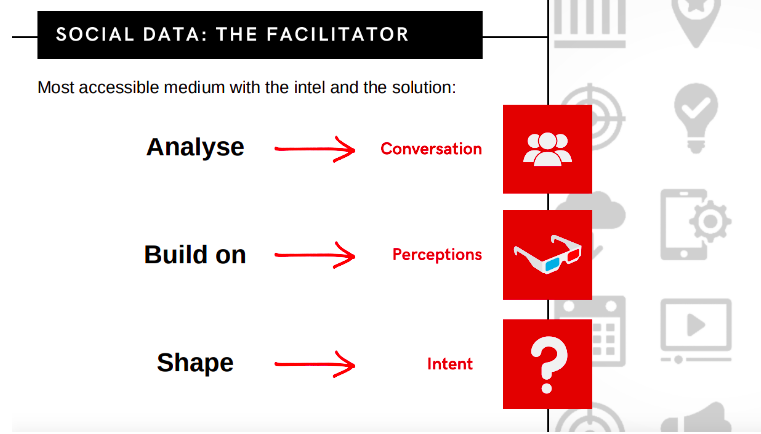[Interview] The keys to understanding the new human and consumption reality
With a background in digital marketing, strategy, research and insights, Nisa Bayindir, EVP of Behavioural Science at Pulsar Platform, thinks that research and insight questions are becoming more fluid and volatile since the Covid-19 pandemic is moving the goal post constantly during the quarantine life. “Especially when things out of our control affect how we live and operate, we can build whole knowledge/research programmes to add context to how the human behaviour and consumer interactions are changing”, Nisa states.
In this interview, the consumer psychologist sheds some light on how social data can help to understand the new normal and respond to consumer behavior in crises like the one we are experiencing. For Nisa, “the blend of conventional research, social data and consumer psychology allows clients and vendors to remain on the ball with a multidisciplinary, always-on listening approach”. Keep reading...
Question: A little bit about yourself... As a consultant, what is/was your day to day?
Answer: I’m no longer working as a consultant, but when I did work as a consultant, a typical day in my life was never about consumer psychology in isolation. I have a background in digital marketing, strategy, research and insights, so when I worked as a consultant I worked on larger brand or campaign strategy projects with the usual suspect elements of any strategy, and complemented these with consumer psychology expertise, such as applying lenses of group and/or social psychology, behavioural sciences for marketing and motivations/attitudes constructs. With strategy as the broader project framework, consumer psychology becomes the compass with which you dig deeper to understand consumer behavioural dynamics.
Q: What’s the difference between someone in your role working at an agency, brand and tech product level?
A: Consumer psychology is quite an agnostic, foundational discipline that can be interpreted for the task at hand, and that is because the consumer psyche has very robust, human building blocks that will not shift around just because you’re looking at it through the lens of campaign strategy, product development or brand identity building. The needs and motivations are broadly quite solidly definable at base level.
The only difference between place-of-work vs. role would be the luxury of time to be able to dig deeper and make thorough analyses, or research in consumer psychology, to be able to support our theories or various psychological constructs with owned data. Sometimes we just need to work with theory and use them to provide hypotheses for strategy development.
-1.png?width=300&name=Disen%CC%83o%20sin%20ti%CC%81tulo%20(10)-1.png) And sometimes, when the circumstances allow such as the societal change we’re going through with Covid-19, regardless of the function we’re serving, we can build whole knowledge/research programmes to add context to how the human behaviour and consumer interactions are changing especially when things out of our control affect how we live and operate. Since the pandemic has meant that the goal post is constantly moving during the quarantine life, research and insight questions are becoming more fluid and volatile too. So the blend of conventional research, social data and consumer psychology allows clients and vendors to remain on the ball with a multidisciplinary, always-on listening approach.
And sometimes, when the circumstances allow such as the societal change we’re going through with Covid-19, regardless of the function we’re serving, we can build whole knowledge/research programmes to add context to how the human behaviour and consumer interactions are changing especially when things out of our control affect how we live and operate. Since the pandemic has meant that the goal post is constantly moving during the quarantine life, research and insight questions are becoming more fluid and volatile too. So the blend of conventional research, social data and consumer psychology allows clients and vendors to remain on the ball with a multidisciplinary, always-on listening approach.
Q: In 2018 just 46% of market researchers used social listening data. In your opinion, how do you think the role of social data in MR will evolve over the next few years?
A: Social media listening was a novelty a decade ago, everyone was finding their footing in marketing, trying to play catch up with the up and coming channels, features and fast-adopting communities. Fast forward to today, social media listening is no longer a novelty, quite the opposite - it’s a must-have. Conventional research methods are evolving to catch up with the digital consumer, but in general, realtime data has become more important to a certain extent.
In the next few years, we will see more efforts to make social media connect with other research methodologies - especially quantitative ones. Social media listening is not just about volumes of engagement, it’s also about context. And quantifying context is a heavily qualitative affair, too. So machine learning and AI will be crucial in both context and methodology building.
One of the slides I shared at this event is pointing out at that very opportunity (image below). It will not only be about analysis of conversations, but it will also allow us to identify patterns in perceptions, then correlate these to intent, and hypothesise to shape these in accordance with the full picture.

Q: How social data can help to understand the new normal and respond to consumer behavior right now?
A: Social media data is essential to keeping abreast with the changing communication landscape at the moment. While qualitative research is coming to a near-halt, quantitative research may slow down. Bearing in mind that they capture a moment in time with self-reported data, social media gives us the opportunity to chime in with the developing conversation and community clusters online. This makes a truly observational approach possible, and even longitudinal research a potential, for us to gain insight into the evolving consumer/human reality around the globe.
Tools that offer multilingual and multi-country tracking and analysis offer us the comparative view and cultural nuances as well. The biggest benefit of social media data of course is the real-time nature of it. Everyday, the number of Coronavirus related news and emerging updates change how we go about our daily lives, and repercussions are best tracked via realtime data. Thanks to this, market research professionals can remain on top of the developments and their effect on their consumers, and recommend communications tactics to their clients for them to be able to steer their strategy in a better-informed fashion.
Q: For some industry players the barriers among the research and analytics industries have started to fall away. “We will smoothly become one bigger and more modern industry…”. What is your view on that?
A: I’d say it’s bang on - very true. I hope that my gut instinct - and that vision - is the north star for all of us: marketers, market researchers and strategists. We’re all learning to work not only together, but also work collaboratively across disciplines. Digital media in general put the whole world on growth-on-steroids, if you will. We are evolving to be more nimble, agile, forward thinking and ambitious in how we analyse data, how we strategize and consider the big picture in every step of the “marketing” way.
Image by Greg Rakozy on Unsplash






